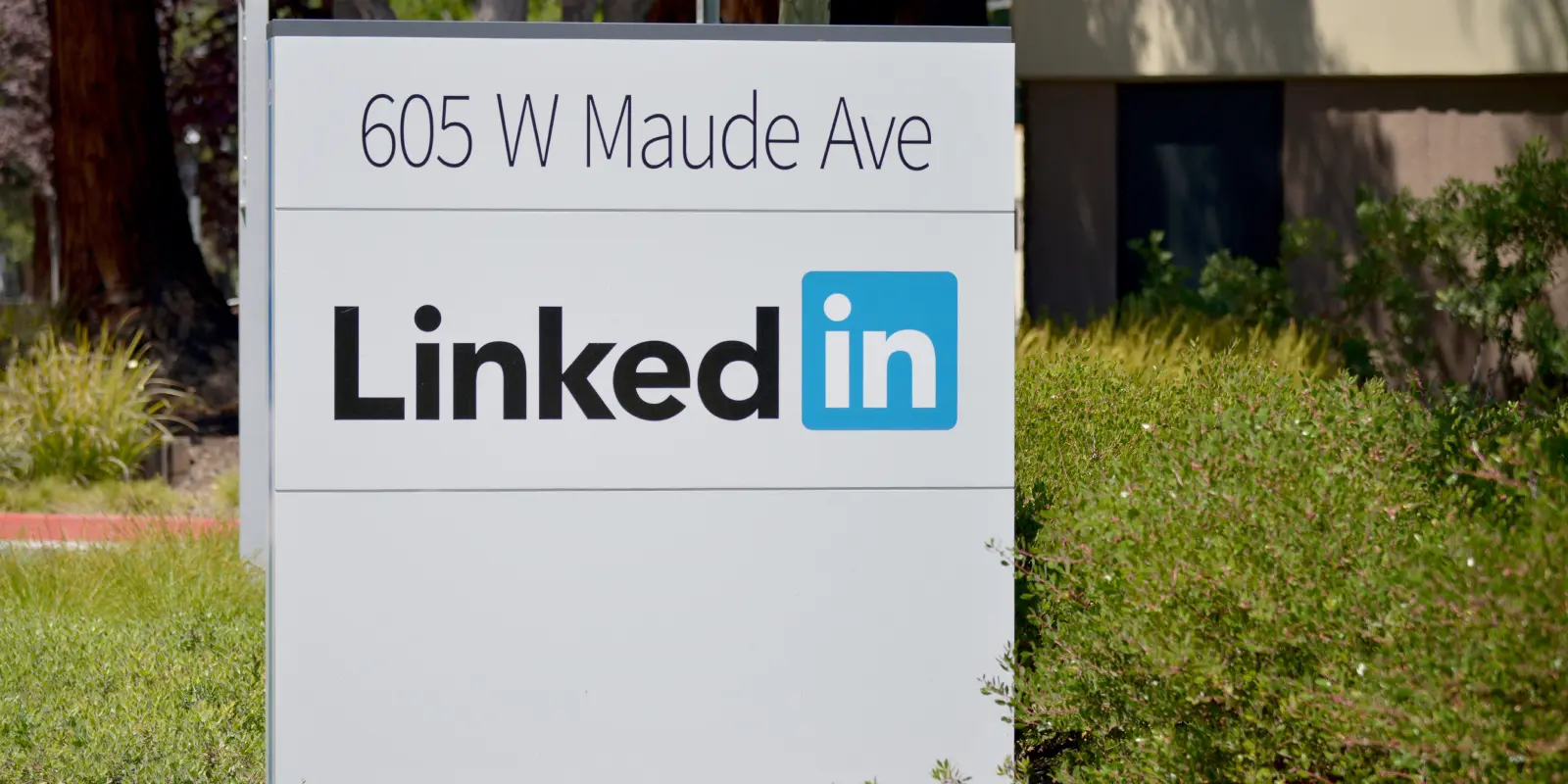Would you believe LinkedIn first went live back in 2003? That makes it one of the oldest social media networks on the web today! But in just the last few years, the platform’s popularity has grown like a muscle on steroids – with around 200 million users in the US alone.
Of course, this has opened up tonnes of possibilities for professionals all over the world, from making new connections to scoring that dream job. But as always, more people means more content. And more content means you’ve got to work extra hard to stand out from the digital crowd.
The obvious way to grab people’s attention is with LinkedIn ads. But another great way to get noticed is by writing LinkedIn articles. And today, I’m going to help you do just that. This quick crash course will show you how to write a LinkedIn article that snatches clicks and captivates your audience. Plus, tips on how to review it with stakeholders using document approval software.
Here’s a snapshot of what’s to come:
- The key benefits of writing LinkedIn articles
- How to write a LinkedIn article and get it published
- Top tips to make your article even stronger
Now, let’s dive in.
Supercharge your marketing reviews
Share, review, and approve all your content in one place with Filestage.
The key benefits of writing LinkedIn articles

1. Boost your visibility
When you publish an article on LinkedIn’s publishing platform, it doesn’t just stay in the platform for your existing connections to see. It pops up in people’s organic Google searches too, thanks to LinkedIn’s external algorithm. This means you could publish the same content as you would in a regular blog, but get way more traction just because it has the word “LinkedIn” associated with it. That’s two huge audiences reached with one LinkedIn article!
2. Become a thought leader
When writing LinkedIn articles, taking the time to craft high-quality long-form content is a fantastic way to position yourself or your business as a trailblazer in that particular topic. The generous character limit of 110,000 adds up to at least 14,000 words. This gives you much more space for detail, analysis and insight than a simple LinkedIn post. Which in turn opens up opportunities for different opinions and deeper, more meaningful conversations with and among your audience.
3. Strengthen your personal brand
Increasing your visibility and starting conversations via well-crafted LinkedIn articles can do wonders for your online presence and personal brand. Consistently creating content also allows you to shape and control your brand narrative by aligning your articles with your values and expertise.
Better yet, if you’re trying to generate leads or professional opportunities, writing a great LinkedIn article demonstrates your top notch communication skills and unique personality. That’s a great way to make yourself a more desirable person to work with.
4. Have a long-term impact
Unlike LinkedIn posts that have a shorter lifespan, writing LinkedIn articles ensures that people can access your content at any time. This means people will continue to find your articles way down the line when they search for content related to the topic you’ve written about – even if they’re not connected to you directly.
As you continue to write and publish LinkedIn articles, you’re creating a hub of information and industry knowledge that people can learn from over time. So, if you want to leave a lasting impact on your field or industry, writing LinkedIn articles is a fulfilling way to make that happen.
5. They’re easy to create
Writing LinkedIn articles can be as easy (or as challenging) as you choose. Of course, if writing is a skill you’re yet to develop, or you need to do lots of research to write about a complex topic, the process can become more time-consuming. But once you get to grips with the steps involved and get into the habit of regularly creating LinkedIn articles, it can be an enjoyable experience.
With that said, let’s now look at the practicalities of writing and publishing an article on LinkedIn.
How to write a LinkedIn article and get it published

1. Go to your homepage
First things first. Before you start to write articles on LinkedIn, you’ll need your own LinkedIn account. After you’ve signed up and logged in, head over to your homepage. Note this is different from your personal profile page.
Then simply click the “Write article” button and the LinkedIn publishing tool will open.
2. Write a headline for your article
Your headline is the first thing people will see when your article shows up on their personal LinkedIn feed. You want to give people a reason to click through to the full piece. And a catchy headline is your best bet. One that ideally hits the sweet spot of 40 to 49 characters.
There are different ways to draw your audience in with a LinkedIn headline. Clearly outlining what they’ll get out of the article or how it will help them, for example “How to…” or “10 best ways to…”, is a good way to go. It creates incentive. Just make sure your article pulls through on your headline promise.
You can also go in with the type of headline that grabs attention and leaves your audience wanting to know more. Something controversial, perhaps posed as a question, like “Is oxygen really necessary for human life?”. Good luck delivering on that one though!
3. Write your article
Now comes the fun stuff. It’s time to write your article!
You can write and edit to your heart’s content on LinkedIn’s publishing tool before publishing your LinkedIn article. I personally like to do my planning, writing, and whatnot in a separate document such as Microsoft Word or Google Docs. It just gives me a greater sense of freedom to play around with the style and structure of my LinkedIn articles. I then copy and paste into LinkedIn’s Publishing Tool. But find what process works for you and roll with it.
It’s worth noting that articles tend to perform better in terms of views and shares when they fall somewhere between 1,500 and 2,000 words. Just make sure you’re not fluffing up your content solely to reach that number. It’s better to have well-written LinkedIn articles that are less than 1,500 words, rather than waffling on unnecessarily.
4. Include visuals to support your article
You don’t need to embed relevant images into your LinkedIn articles, but it is highly recommended for a couple reasons.
Firstly, peppering some images throughout your LinkedIn articles will automatically make it look more polished and professional.
Secondly, and more importantly, supporting images will help boost engagement. Research has shown that people are four times more likely to understand and remember information that’s accompanied by imagery.
To add an image to a LinkedIn article, simply click the icon on the left of the text box.
5. Finish with a strong call-to-action (CTA)
Ultimately, when writing LinkedIn articles, you want them to gather engagement and start conversations. That’s why a strong CTA is important. This could take the form of a question that your readers can answer in the comments. Or you can ask them to share their thoughts and opinions on the topic you’ve written about. No matter the type of CTA, just be sure to follow up with everyone who takes the time to leave a comment or ask a question.
6. Review your article
Whether you’re writing LinkedIn articles for yourself or on behalf of a brand or business, taking the time to catch any spelling or grammar mistakes is a must. You can do this step yourself, or share with your colleagues for review to make sure you can publish it with confidence!
As well as getting rid of any pesky typos, you should also use this time to optimize your article. Make sure your headline is catchy. Check that the LinkedIn article has a clear structure (a lot of people will be reading your LinkedIn article on their LinkedIn mobile app, so make your content scannable). Streamline your LinkedIn article so that it’s in your desired tone and that it’s easy to digest for the reader. All this shows that you value and respect their precious time and attention.
One last thing. Once you have several LinkedIn articles live, add internal links between them to keep readers reading!
7. Publish your article
Whoop whoop! Now that you’ve finished writing your LinkedIn article, it’s time to put your masterpiece out into the world. Simply click “Publish” at the bottom of the page and give yourself a well deserved pat on the back for creating your very first LinkedIn article.
8. Don’t forget to share it
Once you’ve published your new LinkedIn article, you’re going to want to share the news on your feed for all your followers to see. A little window should pop up and nudge you to share the fresh piece of content there and then.
But you can also share it at any time, or re-share it with a new post by clicking the “Share” button at the bottom of your publication.
For more practical tips and examples on how write a strong LinkedIn post, check out the 10 LinkedIn post ideas to help you create a buzz around your business in 2023.
Top tips to make your LinkedIn articles even stronger
Now you’ve nailed the basics, here are some tips and tricks you can use to make sure every article you post on LinkedIn helps you hit your targets for audience engagement.
1. Think about your topic
Of course, you’re going to want to write about things that matter to you or your brand. That’s how you gain the right kind of traction. But when it comes to choosing the specific topic for each article, there are some things to consider that will really help your articles hit home.
For example, think about your target audience’s interests, passions and pain points. Tailoring your content to the needs of your LinkedIn community is a surefire way to make sure people want to read what you’re writing.
You can also look at current affairs and trending news. Sharing your thoughts and opinions on relevant hot topics will make your LinkedIn article all the more appealing for your audience. Keeping current also makes for more shareable content.
2. First impressions matter
This applies to your headline as well as the opening lines of your LinkedIn article. Hooking people’s interest is no easy feat. A cleverly crafted headline will do a lot of the heavy lifting here. But the opening sentence also needs to spark curiosity and keep your audience reading. Pose a question. Start with a surprising fact. Or outline a relatable problem that you’re going to help them solve.
However you choose to do it, kick your article off with a bang that’ll keep readers wanting more.
3. Time your posts
Once you get into the swing of regularly posting LinkedIn articles, posting consistently at regular times will help keep your audience engaged. And if you really want to perfect your timing, there are lots of studies out there that can give you an idea of the best times to post on LinkedIn for optimal engagement on people’s LinkedIn feed.
4. Use relevant keywords
Populating your writing with related keywords will help boost its SEO performance so that your LinkedIn articles rank well. This means they will be more visible both on LinkedIn as well as in other search engines like Google.
Optimizing your LinkedIn articles for SEO will involve choosing one main keyword which will feature in your title. And a variety of secondary keywords related to the topic. You want both your primary and secondary keywords to be incorporated throughout the entire article. There are lots of free tools online that can help you out with SEO optimization.
Final thoughts
To sum up, LinkedIn articles are a great way to grow your network and strengthen your brand. But in order to be successful, you need to create high quality content for your audience. Hopefully this article has helped you learn how to write and publish top performing articles on LinkedIn. And if you’re looking for an efficient, collaborative way to review them, start your free trial with Filestage today!






